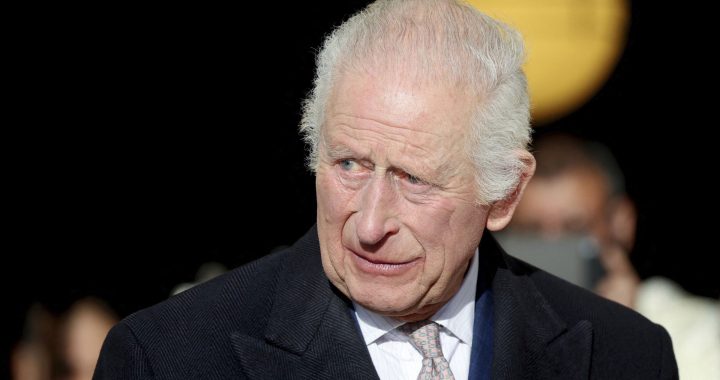The Canadian Human Rights Tribunal (CHRT) says Canada is discriminating against a First Nation police force by not properly funding its services, providing the same level of protection as non-Indigenous forces.
Chief Gilbert Dominique filed a complaint on behalf of Pekuakamiulnuatsh First Nation to denounce this underfunding, arguing that it compromises the public safety of Mashteuiatsh Innu Nation – located about 300 km north of Quebec City – as well as other Indigenous communities.
Following a hearing in December 2020, the CHRT concluded that “the complaint was substantiated and that the implementation of the FNPP perpetuated existing discrimination against Indigenous peoples,” according to a community-issued press release.
“This is the second time the Canadian Human Rights Tribunal has recognized existing discrimination against First Nations in government programs,” Dominique in a statement after the Tribunal’s decision was made public on Jan. 31.
“A similar decision was rendered in 2016 regarding the First Nations Child and Family Services program. We have to stop denying it, there is systemic racism towards First Nations and governments must act to stop it,” Dominique added.
In 2016, the CHRT made a historic ruling saying that Canada discriminated against First Nations children by willfully and recklessly underfunding the child welfare system on reserve compared to what was available for children who lived off-reserve.
The tribunal ordered Canada to pay $40,000 per child and some families in penalties, the maximum it can award.
The policing services provided by Pekuakamiulnuatsh First Nation are funded by the federal First Nations Policing Program (FNPP).
According to the community’s press release, under the FNPP, “the provinces or territories and First Nations, Indigenous communities must have access to police services that are adapted to their needs and equal in quality and quantity to the services provided in surrounding communities with similar conditions.”
Dominique complained that the money received was “insufficient” to provide an “equivalent level of policing services to that of non-Indigenous police services and to ensure the sustainability of services.”
This lack of funding, combined with a series of short-term funding agreements, has impacted the quality of supplies and equipment, the number of staff, and officer salaries — a gap with the levels that are standard for non-Indigenous police, according to Dominique.
“The First Nations Policing Program of Public Safety Canada did not allow us to cover the actual expenses of our public safety in order to meet a minimum of service,” he said.
“However, our police force has the same missions, responsibilities and powers under Quebec police law.”
This reality affects all 22 Indigenous police forces in the province, said Pierre Simard, the director-general of the Association of First Nations and Inuit Police Directors of Quebec.
“A victim or a crime in an Indigenous community should be able to be met with the same support, the same tools, as in non-Indigenous territory,” he said.
Lack of reliable and stable funding is a recurring complaint among Indigenous-led police forces, including the Nishinawbe Aski Police Service in northern Ontario, and the Kativik Regional police force in Nunavik, the sub-Arctic region of Quebec.
In 2018, the financial situation was so dire that Kativik Regional Police Chief Jean-Pierre Larose threatened to close up shop and hand the region over to the province’s provincial police force, the Surete du Quebec.
“I have to tell you, we’re not even at five minutes to midnight, we are at one minute to midnight,” Larose stated during hearings held during the 2018 hearings held during the Viens Commission, a Quebec inquiry examining the relationship between Indigenous peoples and certain public services.
Kativik eventually signed an agreement in 2019.
According to the Justice Canada website, the 2021 Federal budget made “significant new investments to support culturally responsive policing in Indigenous communities.”
This includes $43.7 million over five years “to co-develop a legislative framework for First Nations policing that recognizes First Nations policing as an essential service; $540.3 million over five years, and $126.8 million ongoing, to support Indigenous communities currently served through the FNIPP and expand the program; and $108.6 million over five years to repair, renovate, and replace policing facilities in First Nation and Inuit communities.”
APTN News reached out to Public Safety Canada who only said they’re reviewing the decision.
Ghislain Picard, the newly re-elected grand chief of the Assembly of First Nations Quebec-Labrador, said that this was an important victory for Pekuakamiulnuatsh “and First Nations across the country.”
“We hope that this decision will ensure the sustainability of our Indigenous police services, which have often encountered all sorts of difficulties caused by underfunding,” Picard said via statement.
The federal government has 30 days to decide whether or not to appeal the judgment.
Ottawa had tried to block the complaint at the tribunal, arguing that the court lacked jurisdiction in the case, an argument rejected by the CHRT.
During the child welfare hearings, Canada had tried to use a similar argument against Cindy Blackstock, executive director of the First Nations Child and Family Caring Society and the Assembly of First Nations. Canada’s lawyers failed on each attempt.
As a next step, the CHRT will establish the forms of reparations that Ottawa must offer during a follow-up hearing.
Dominique hopes these reparations will result in a change in the funding method to ensure the longer-term sustainability of Indigenous public safety services.
Although the decision affects only one police force, Indigenous leaders say Canada will have no choice but to look at reparations in a global form for all the communities of the country, since they all share the same situation.
“First Nations were set up to fail from the beginning with the creation of the FNPP in 1991. As an Indigenous police force, we have responsibilities in terms of services to our populations, to have the same equipment as our neighbors around us, and to offer the same service delivery,” explained Pierre Simard, executive director of the First Nations and Inuit Police Chiefs Association of Quebec.
“The financial dependence on this program has had serious consequences on our police services.”
Read the decision here:










